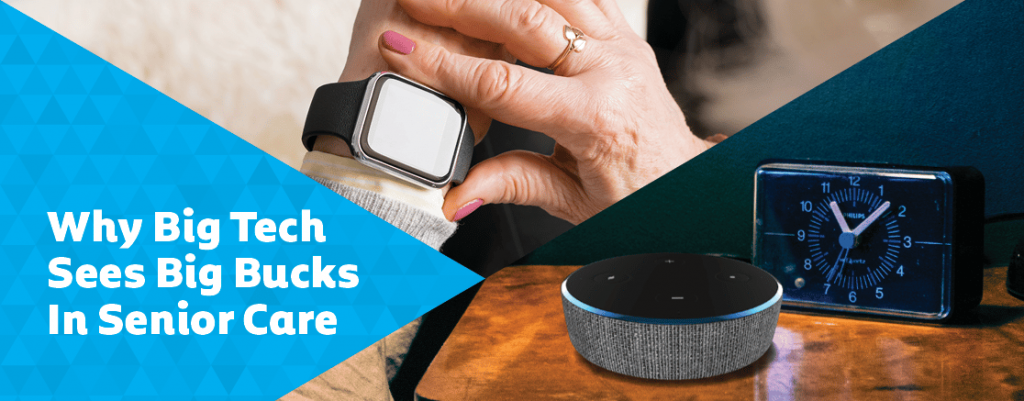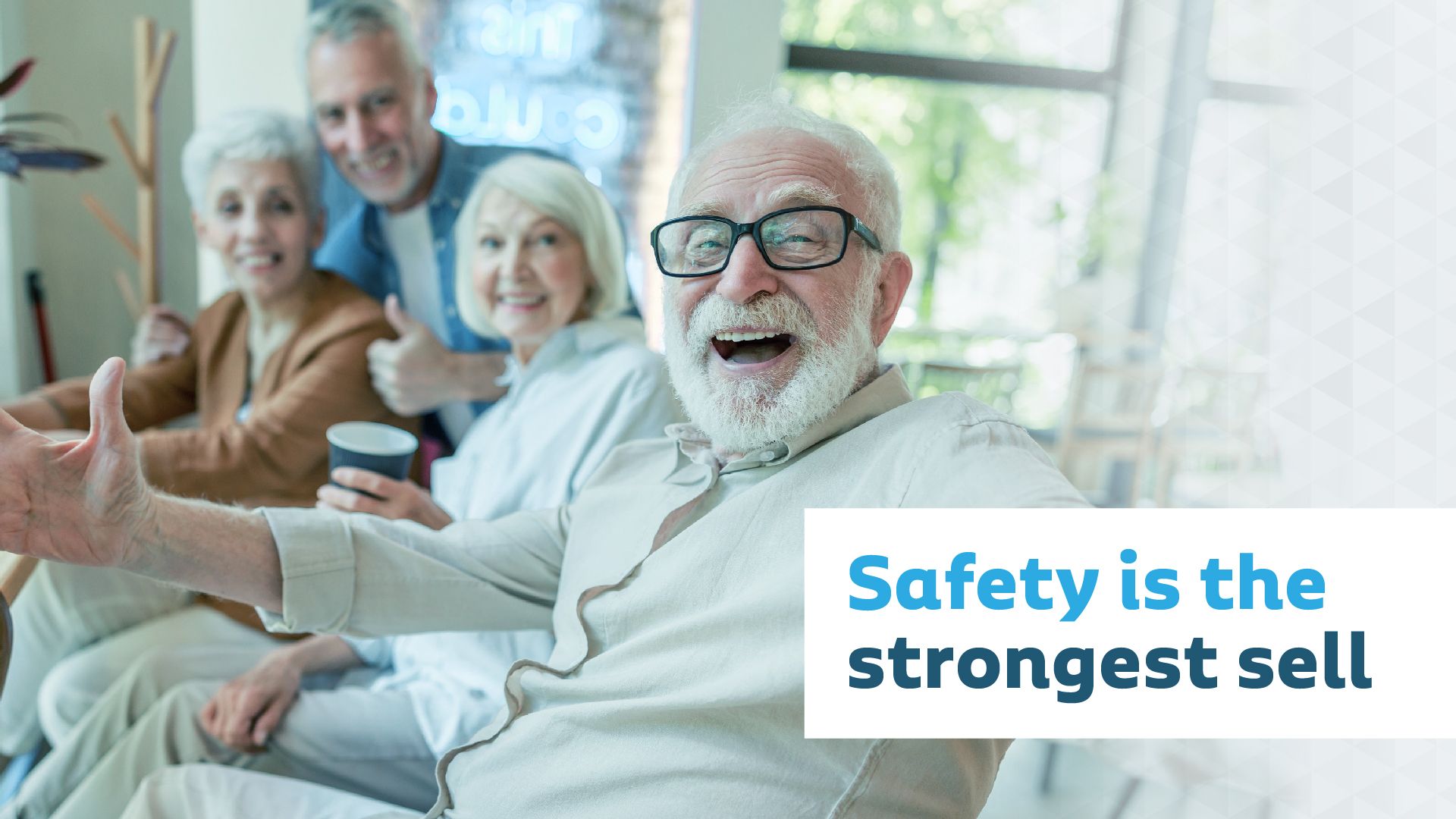Main Menu
Posted by Vayyar
February 4, 2021Technology For Seniors: Big Tech’s Growing Role

Across the industrialized world, rapidly aging populations are creating unprecedented social and economic challenges. At the same time, however, technology for seniors that safeguards older adults and enhances their quality of life is a growing market. It’s no surprise that Big Tech has taken notice.
Some of the world’s leading innovators are providing solutions aimed at both elderly people who wish to age in place and senior living communities that are looking for new ways to enhance health and business outcomes.
In doing so, these organizations are overcoming long-held assumptions concerning older people’s attitudes to technology. Established PERS dealers and community operators that are reluctant to innovate due to beliefs regarding seniors and technology should also pay close attention.
Increasingly tech-savvy seniors
There’s a common and enduring misconception that the elderly are not tech savvy. In fact, seniors are rapidly embracing the latest technologies, especially in light of COVID-19.
In terms of senior citizens and technology statistics, a recent survey shows that 61% of those aged 64 and above have made greater use of technology during the pandemic, while uptake of telemedicine services has increased by a massive 300%.
Global companies such as:
- Amazon
- Apple
- and Microsoft
are keenly aware of this trend and are moving rapidly to meet the demand.
Big tech gets in on elderly care technology
Amazon’s Echo Alexa is proving to be a valuable senior living technology solution. For seniors with Alzheimer’s or dementia, Alexa is an intelligent companion that never gets tired or frustrated by repetitive questions. It’s also being primed to play a key role in setting medication reminders and taking health readings.
Apple, meanwhile, has enhanced the capabilities of its smart watch to detect hard falls, call 911, and monitor heart conditions. Facebook’s Preventative Health product recommends health screenings based on user data, Google has partnered with leading healthcare provider Ascension to aggregate patient data, and Microsoft is working with top insurer Humana to use cloud computing, AI, and voice technologies to help seniors navigate care options.
However, all these solutions depend on some level of user action or input. Although seniors are increasingly empowered and highly engaged with technology, what they — like all consumers — want is effortless, intuitive experience.
Passive monitoring technology – the missing piece of the puzzle
Wearable tech is, of course, effective only if the user remembers to put it on. And even the most intelligent virtual assistant or smart home hub needs to be asked the right questions.
That’s why passive monitoring technology holds the greatest promise in terms of enhancing well-being.
As David Frumkin of CDW Healthcare states, “It’s the ability to influence how my health is going on a passive basis that is immense and will truly move the needle for the wellbeing of seniors.”
Seniors, whether they choose to age in place or in a senior living community, need passive monitored well-being technology that safeguards them around the clock, without needing to be activated or instructed.
What’s more, it needs to respect their privacy completely, an area in which cameras – even HIPAA-compliant ones – and computer vision-based solutions inevitably fall short.
The role of radio frequency imaging
One solution type that is passive, protective and private is monitored well-being powered by radio frequency imaging. One wall-mounted sensor provides a wealth of information, including presence, movement, time spent in room and alerts that enable rapid response to emergencies.
This rich data not only immediately detects falls but also provides 24/7 monitored well-being, enabling positive caregiver interventions.
Because the technology does not rely on optics, it is robust in all lighting conditions, working in darkness and steam, and does not require line of sight. It also maintains user privacy at all times, since it simply collects data, with no cameras involved.
As Big Tech makes greater inroads into the senior care market, technology such as this is likely to play an important role in the creation of holistic solutions that offer the ideal combination of advantages.
Ideal assistive technology for seniors at home or facilities
With over-65s representing an ever-expanding market, the world’s biggest companies are intensifying their efforts, competing to meet elderly people’s needs by integrating leading-edge technologies into their products and services. Senior living operators, PERS dealers and seniors themselves all stand to benefit from this latest chapter in the battle of Big Tech.
To see how Vayyar Care enhances senior health outcomes for people choosing to age in place, click here.
The Post URL was successfully copied to your clipboard
Read more on #elderly care

08 October 2024
Recruit, reinforce, and retain should be the mantra of any hiring manager.…
Read more
05 August 2024
We’re living longer, not healthier. Over 95% of people aged 65 or…
Read more
17 June 2024
Senior living occupancy has recovered from the perfect storm it weathered in…
Read more
12 May 2024
Artificial Intelligence is on the verge of revolutionizing fall prevention in elderly…
Read more


